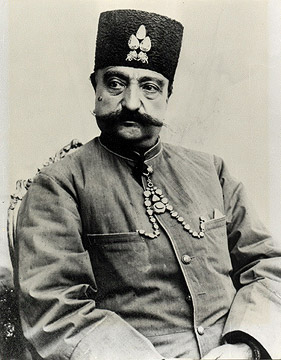Image Resource Bank
Image Gallery |  1 of 15
1 of 15 
Nasser Ad-Din Shah Qajar
Nasser al-Din Shah Qajar was the Shah of Iran from 1848 until 1896. His reign demonstrated many of the chronic struggles of the Iranian dynasties. On the one hand, he introduced limited modernization programs, including a postal system, the foundation of the first, European-style institution of higher learning (Dar al-Funun), and the creation of the Cossack Brigade, the elite military unit that would produce the next line of Iranian shahs. On the other hand, however, Nasser al-Din’s reign was plagued with problems, including a perpetual shortage of funds for the central government and pervasive corruption and inefficiency in the bureaucracy. He also presided over a time when Iran was subject to intense pressure, diplomatically and commercially, by both England and Russia, each of which considered Iran an important strategic asset. The shah tried to use the Anglo-Russian rivalry to his benefit, striking economic deals with each party that he hoped would benefit his government financially. The most famous of these was the Reuter’s Concession, which granted the British businessman Baron Julius de Reuter the right to construct all railways, canals, and dams in Iran, in addition to the rights to mining and agricultural development, in return for a flat cash fee. The agreement was wildly unpopular among the shah’s subjects, and he was forced to cancel the concession, or risk massive popular unrest.
Name: Nasser Ad-Din Shah Qajar
Material: Photograph
Size: 557 x 713 pixels (263 KB)
Date: Unknown
Place of Origin: Unknown
Location: Wikimedia Commons
Source and Registration#: Link to resource![]() (accessed April 30, 2010).
(accessed April 30, 2010).

A. Holly Shissler
Associate Professor of Ottoman and Modern Turkish History, University of Chicago
 Erin L. Glade
Erin L. Glade
Ph.D. candidate, University of Chicago




